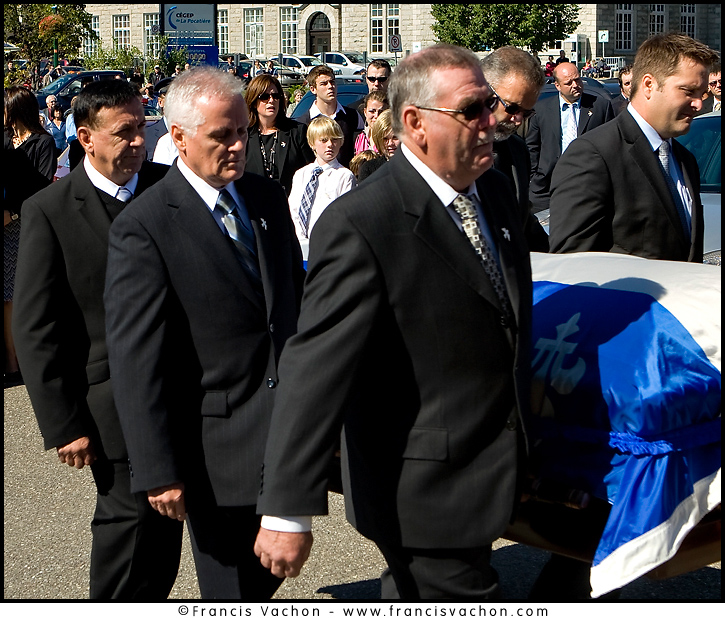
Aujourd’hui était les funérailles de Claude Béchard, ministre québecois mort du cancer à 41 ans. Au delà des allégeances politiques, sa mort à provoqué un élan de sympathie de la population en raison de son départ en si bas âge et du côté sympathique de l’homme. Les médias étaient donc nombreux à La Pocatière pour couvrir l’évènement. Et qui dit médias et funérailles dit aussi critique du public sur notre travail dans ce genre de circonstance.
C’est un tweet de Patrick Routhier qui a attiré mon attention :
C’est quoi le boute que les journalistes comprennent pas dans ON VEUX VIVRE ÇA DANS L’INTIMITÉ LES FUNÉRAILLES DE CLAUDE BÉCHARD #rapasse
Précisons d’abord : C’est toujours la famille qui décide de l’accès qui est donné aux médias. Si les caméras sont à l’intérieur pour prendre des images pendant la cérémonie, c’est que la famille l’a accepté et autorisé. Généralement, on nous demande de rester à bonne distance, de respecter leur intimité.
Et croyez moi, il n’y a AUCUN membre des médias qui aime se retrouver dans une église lors de funérailles, alors JAMAIS nous n’essayons de « pousser » pour avoir un accès plus important que celui accordé.
Dans le cas de Béchard, il y avait un cordon pour les médias sur le côté du parvis et nous n’étions pas accepté à l’intérieur.
À tout cela, il ne faut pas oublier un point important : le désire de garder une trace. Presque tout le monde conserve l’avis de décès d’un proche. Souvent, c’est le seul souvenir qui reste de la cérémonie, cérémonie qui fait partie intégrante du processus de deuil.
Je suis sûr que la plupart des familles endeuillées qui ont accueilli les médias ont conservé les découpures de journal. Vont-ils lire ces articles dès le lendemain pour voir comment la nouvelle a été traitée? Bien sûr que non. Mais dans quelques semaines… Quelques mois… Le besoin de revivre la journée à tête reposé reviendra. J’avais d’ailleurs rapporté sur mon blogue un témoignage en ce sens du photojournaliste George Bridges.
Et moi aussi je peux en témoigner. Lorsque mon premier fils est mort, j’ai écris un long courriel à mes amis et à ma famille « étendue ». Je l’ai ensuite mis en ligne sur mon blogue. Souvent, pour évacuer mes émotions ou pour me remémorer, je relie ce bilan de la journée que j’avais alors fait.
J’étais à La Pocatière pour The Gazette. Dimanche ou lundi, je publierai quelques photos et j’expliquerai comment j’ai essayé, tout en racontant « l’histoire », de respecter la famille, qui inclue quatre jeunes enfants, en ne cherchant pas nécessairement les larmes et les pleurs.
Mise à jour: Le billet est en ligne